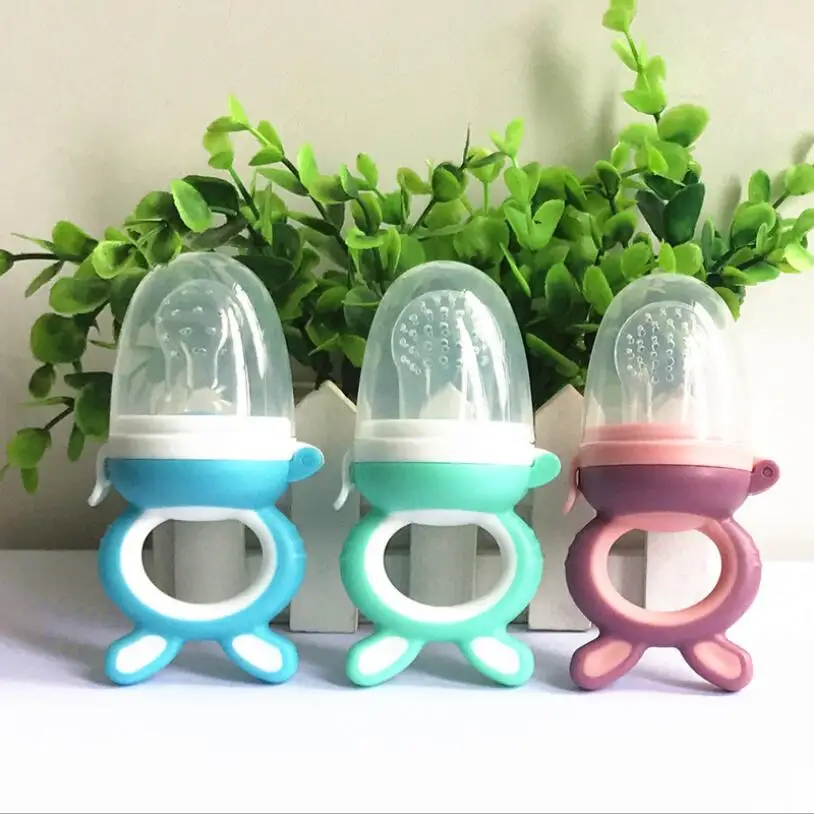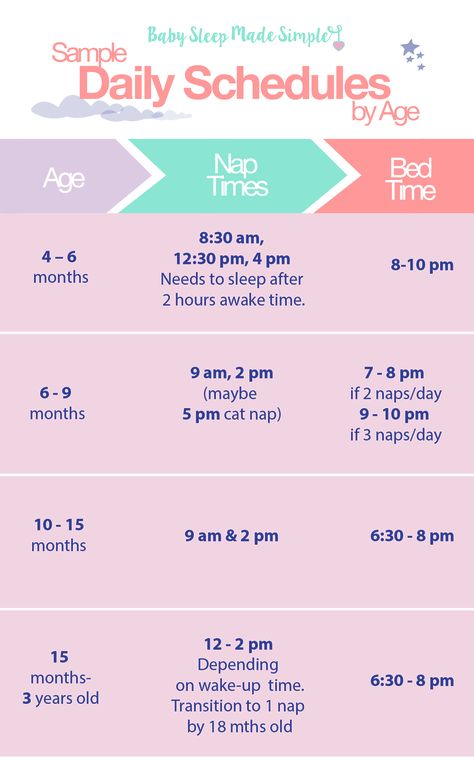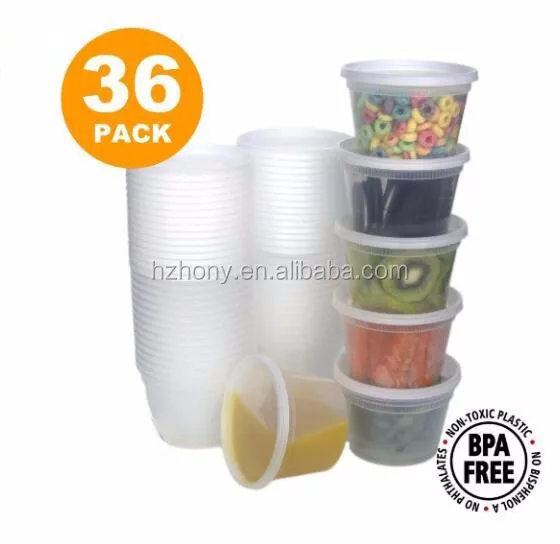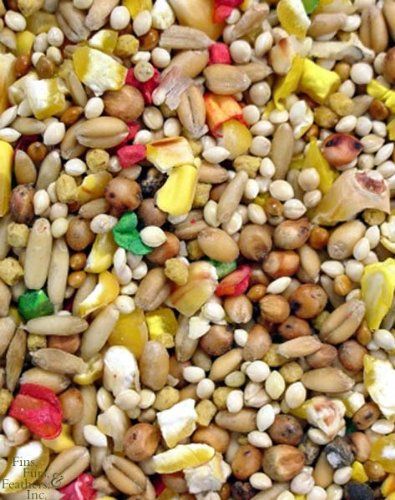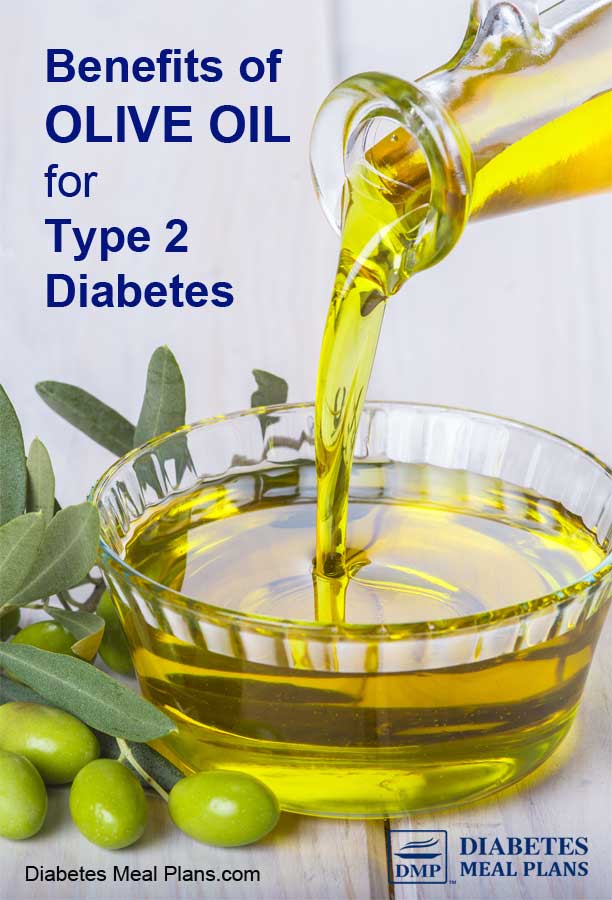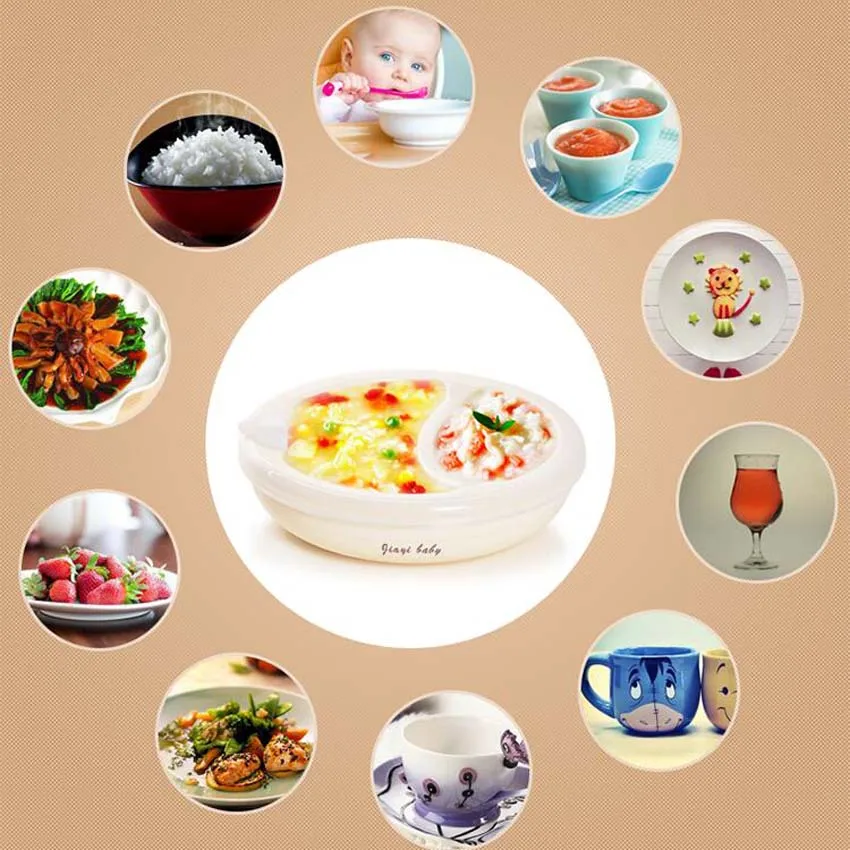Baby feeding dummy
Ultimate Guide to Baby Feeders: Mesh and Silicone
You may have seen baby feeders, whether mesh or silicone, and wondered what they are for. They are a great tool for feeding babies and toddlers—and are especially awesome for teething relief. There are many on the market though, so today I’m sharing the best of the best.
Baby Feeder
A baby feeder is made up of an easy-hold handle and a little pouch with lots of holes. The idea is that the holes allow some of the flavor and texture of the food to come out, without the concerns that may come with larger pieces of food.
This means you can worry less when it comes to choking risks.
One thing to keep in mind: They don’t allow babies to have the full texture experience of the food—since the texture is mostly the mesh of the feeder. That means you don’t want to use one of these for every meal (or even most meals).
Lots of exposures to lots of textures helps babies and toddlers gain confidence in handling all sorts of foods, which can make feeding kids a lot easier over the long run.
But an infant feeder can be a handy tool to have in the mix, especially if on the go, starting to transition to baby food, or trying out a new food that has you a little nervous.
And they are a great way to offer cold teething relief to soothe baby’s gums.
Baby Fruit Feeder
Many people like to use baby feeders to offer fruit, either fresh or frozen, since the product is a safe way for baby to suck on and explore the flavor of a wide range of fruit.
TIP: Another name for this is Baby Fruit Pacifier.
Best Baby Food Feeders
Below are my top picks for infant feeders chosen for ease of use, durability, and ease of care (as in washing!). There are different materials listed, as well as specific information on each product.
Best Mesh Feeder
Munchkin Baby Feeder, sold in a set of two. (Or choose the ones that come with travel caps.)
This baby feeder has a streamlined, simple design of a mesh bag for the food and a ring for baby to hold onto. Small, digestible pieces of food come through so baby is getting some nourishment (and comfort if using for teething) without the risk of choking. It’s about $7 for two of them.
Small, digestible pieces of food come through so baby is getting some nourishment (and comfort if using for teething) without the risk of choking. It’s about $7 for two of them.
Best Silicone Feeder
Boon Silicone Feeder
This baby feeder, which is priced at under $6, is made from durable silicone and can be used with fresh or frozen foods. The interior stem forces food toward the tiny holes in the feeder and the small handle is sized just right for baby’s little hands.
Kidsme Baby FeederBaby Feeder Pacifier Combo
Kidsme Food Feeder
This popular Kidsme feeder has a replaceable silicone pouch that comes in two sizes, so you can adjust and replace as your child grows. It has a unique handle style that some babies may prefer and can be used as a pacifier too. It’s usually priced around $15 and is recommended for ages 4-24 months.
What baby foods should I put into a baby feeder?
Here are some fruits that are good to serve in a baby feeder:
- Raspberries, fresh or frozen
- Strawberries, fresh or frozen
- Blackberries, fresh or frozen
- Cantaloupe
- Honeydew
- Banana
- Mango, fresh or frozen
- Roasted sweet potato
- Roasted butternut squash
- Ripe fresh pear
- Fresh cucumber, skin removed
- Watermelon
- Cooked red meat such as steak
- Frozen grapes (These are NOT safe served to a child this age in any other way as they are a choking risk.
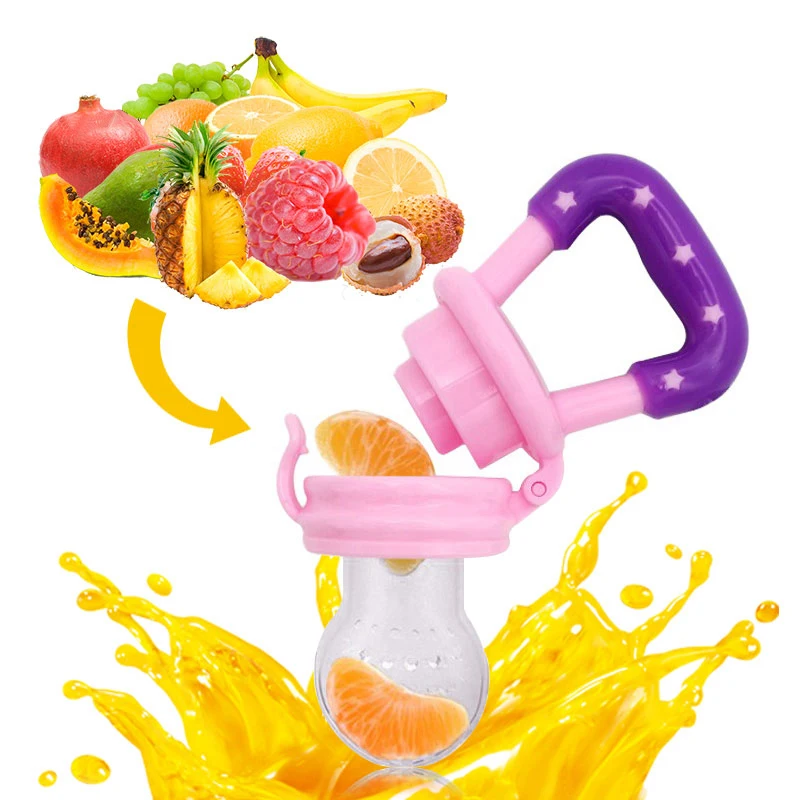 They are fine served inside the feeder, though.)
They are fine served inside the feeder, though.)
TIP: You can use frozen fruit or ripe fresh fruit that’s soft and easy to gum. Avoid any fruits or veggies that are very hard as baby may be frustrated by that texture.
Frequently Asked Questions
What age can baby use a mesh feeder?
Babies can use an infant feeder soon after starting solids around 6 months, or when they can easily hold it and bring it to their mouth.
How do I use a baby feeder to help with teething?
If you fill the feeder, whether mesh or silicone, with frozen fruit, you can soothe teething in infants who are eating solids or in toddlers. It’s cold and yummy, yet requires no real work for the child to suck on, so it’s comforting.
Are all of these baby feeders BPA-free?
Yes, if you choose a mesh baby feeder or one made from silicone, they are BPA-free.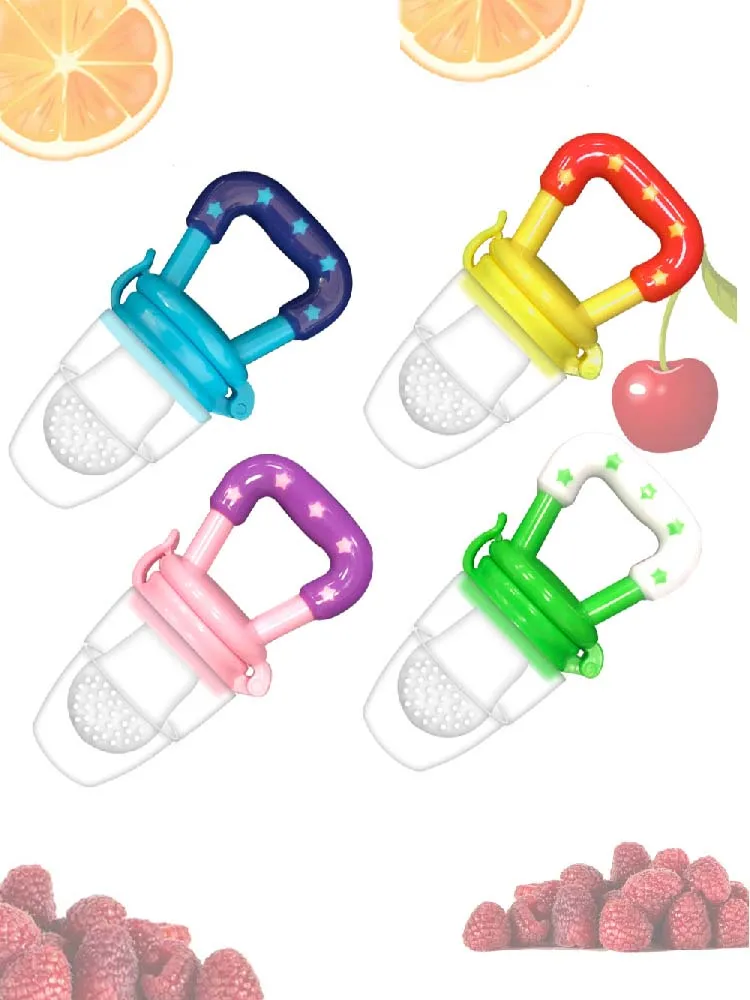
What’s the best way to clean a baby feeder?
Try using a bottle brush or just running water to clean out the mesh. It should be fairly easy to clean if you avoid letting it sit too long with food in it!
Are baby feeders good for babies?
The one downside could be that if you rely on them too much, the child learns the texture of the feeder, rather than of the food. This can make it harder for a child to learn to move actual food around in their mouths and harder for them to accept a range of textures in the future when you don’t want to be using the mesh feeder as much.
Because of that, I recommend using this product at limited times such as when on the go at a restaurant or to help sooth a teething infant, baby, or toddler.
This is not recommended as a way to feed your child at every meal.
If you are worried about choking, review this information on toddler choking and trust that if you serve foods that are easy to squish between your fingers, baby is sitting down at meals, and you are with them, they will learn to eat like so many other kids who have gone before them!
You May Also Like
- Best Baby Puffs
- Favorite Sippy Cups
- Best Snack Containers
- Best Lunch Boxes
- Favorite Suction Bowls
- Top High Chairs
I’d love to hear your thoughts on baby feeders in general or on these specific products, so please comment below to share!
This post was first published May 2019.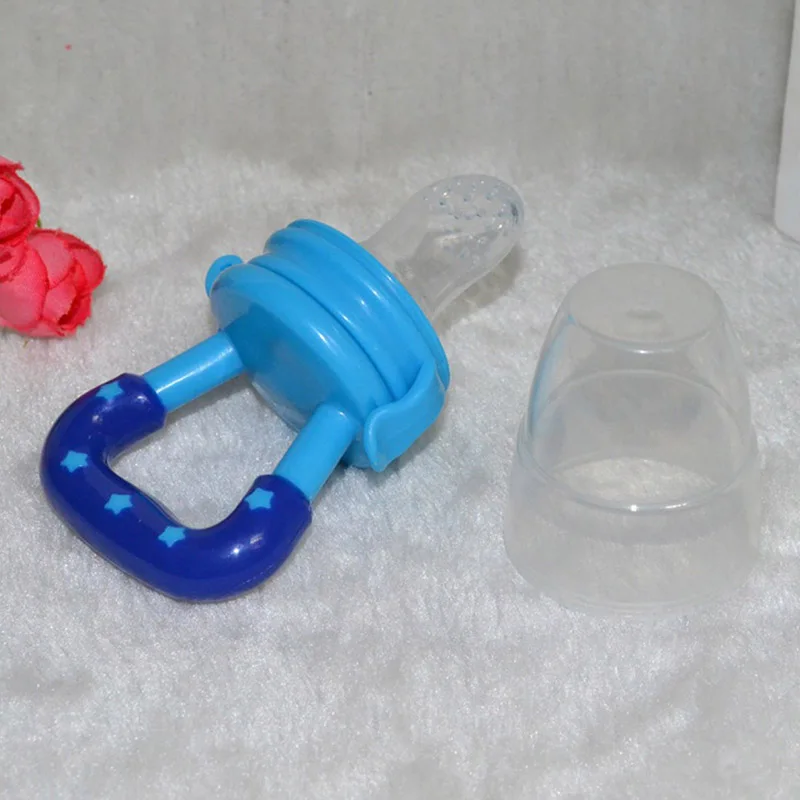
Baby Feeding Dummy Nibbles Weaning Nutrition Pacifier Fresh
Etsy is no longer supporting older versions of your web browser in order to ensure that user data remains secure. Please update to the latest version.
Take full advantage of our site features by enabling JavaScript.
Click to zoom
580 sales |
4 out of 5 stars €7.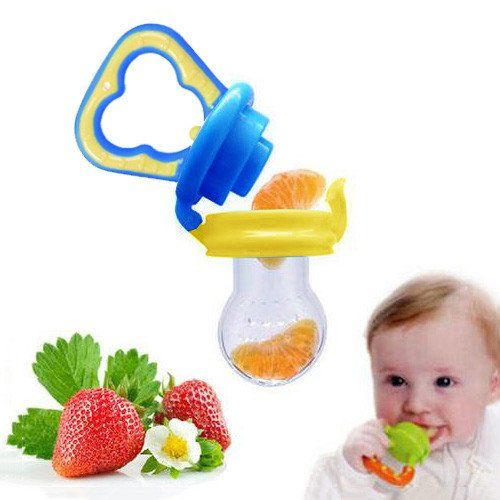 11
11
Loading
VAT included (where applicable), plus shipping
colour
Select an option blue pink green yellow
Please select an option
Quantity
1234567891011121314151617181920212223242526272829303132333435363738394041424344454647484950515253545556575859606162636465
Get it while you can—3 people have this in their carts right now.
Listed on Nov 4, 2022
54 favorites
Report this item to Etsy
Choose a reason…There’s a problem with my orderIt uses my intellectual property without permissionI don’t think it meets Etsy’s policiesChoose a reason…
The first thing you should do is contact the seller directly.
If you’ve already done that, your item hasn’t arrived, or it’s not as described, you can report that to Etsy by opening a case.
Report a problem with an order
We take intellectual property concerns very seriously, but many of these problems can be resolved directly by the parties involved. We suggest contacting the seller directly to respectfully share your concerns.
If you’d like to file an allegation of infringement, you’ll need to follow the process described in our Copyright and Intellectual Property Policy.
Review how we define handmade, vintage and supplies
See a list of prohibited items and materials
Read our mature content policy
The item for sale is…not handmade
not vintage (20+ years)
not craft supplies
prohibited or that use prohibited materials
not properly labeled as mature content
Please choose a reason
Tell us more about how this item violates our policies.![]() Tell us more about how this item violates our policies.
Tell us more about how this item violates our policies.
Breastfeeding with pierced, flat or inverted nipples
The shape and size of nipples can vary greatly from woman to woman. Our practical tips will help you make breastfeeding easier, no matter what your nipples are.
Share this information
Most women's nipples protrude, enlarge and swell when touched, but some have flat or even inward nipples. In addition, some women pierce one or both nipples. Usually flat, inverted or pierced nipples do not cause problems when breastfeeding, but in some cases additional help may be needed.
“Don't panic if you have flat or inverted nipples. As a rule, this does not interfere with breastfeeding in any way,” says Shawnad Hilton, a lactation consultant, health visitor and newborn care specialist who has worked with Medela in the UK for more than a decade.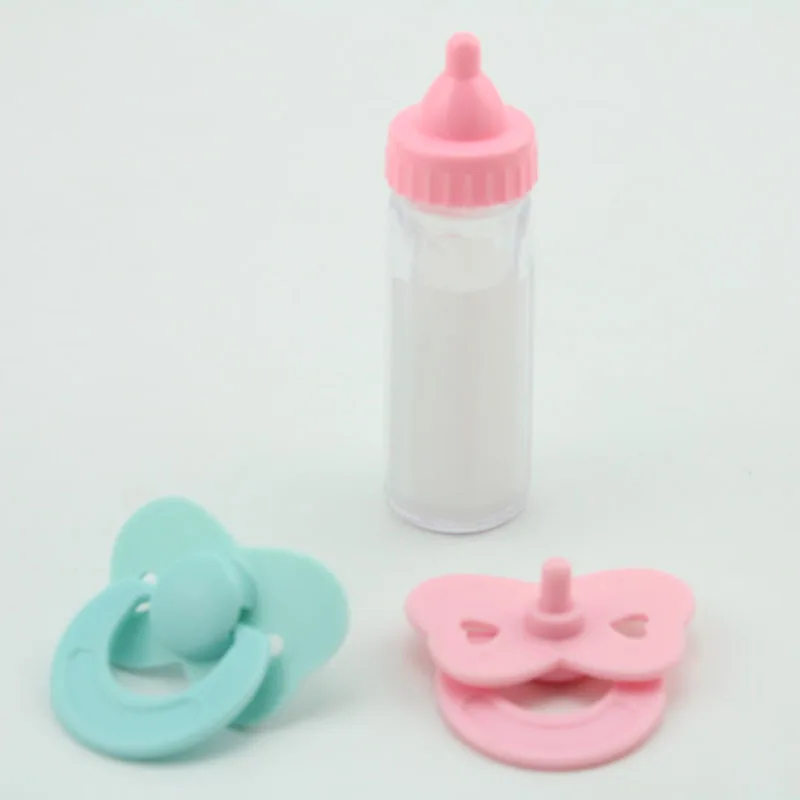 “Remember that your baby takes into his mouth not only the nipple, but also part of the breast.”
“Remember that your baby takes into his mouth not only the nipple, but also part of the breast.”
However, in the early days, when the baby's mouth is still very small and suckling skills have not developed, inverted or flat nipples can make feeding difficult, especially if the baby is unwell or born prematurely.
“Flat or inverted nipples may not reach the baby's palate and therefore not trigger the sucking reflex,” Schoned explains. “That is, the baby may have trouble grasping and holding the breast in the mouth, and the baby will not get enough milk.”
How to tell if you have flat or inverted nipples
Flat nipples 1 do not protrude much from the areola (the darker
area surrounding the nipple) even when stimulated.
Inverted nipples seem to be recessed in the center. They may look like this all the time or only if they are stimulated. Sometimes inverted nipples are on the same level with the areola, and sometimes even sink deep into the breast tissue.
This feature may occur on one or both nipples. It is estimated that approximately 10% of nulliparous women have at least one retracted nipple. 2 If you're not sure what type of nipples you have, try a simple pinch test: Gently squeeze your breast with your thumb and forefinger on both sides of the areola. The nipple should come forward. If your nipple hides inside, creating a depression, then it is retracted.
Preparing inverted and flat nipples during pregnancy
You may have noticed that during pregnancy your breasts have changed and your nipples have become more protruding. If this does not happen and you are worried that the shape of your nipples will make breastfeeding difficult, try using nipple formers* in consultation with your doctor. These are soft and flexible silicone discs that are discreetly placed in the bra and slightly squeeze the nipples, helping to pull them out.
“In a normal pregnancy, nipple formers can be worn from 32 weeks,” advises Schoned. - Start wearing them for an hour a day, gradually increasing the time to eight hours. If you have an incompetent (weakened) cervix or are at risk of preterm labor, check with your healthcare provider about when you can start using shapers, as nipple stimulation can trigger contractions.”
- Start wearing them for an hour a day, gradually increasing the time to eight hours. If you have an incompetent (weakened) cervix or are at risk of preterm labor, check with your healthcare provider about when you can start using shapers, as nipple stimulation can trigger contractions.”
“Nipple formers can continue to be worn after childbirth,” adds Schoned. “Try to put them in a bra 30 to 60 minutes before feeding.”
“I have inverted nipples, and after two or three weeks of constantly trying to latch on, I almost switched to formula,” recalls Nina, a mother from Germany. “I turned to La Leche Liga for help, and one nice woman came to me and supported me to continue to feed. She suggested trying nipple shapers and they really helped me. Somehow my baby began to understand what to do! Breastfeeding went well and I nursed him until he was 21 months old.”
How to help your baby latch on to flat or inverted nipples
If your baby enjoys sucking on your thumb but isn't as interested in your breast, chances are your nipple isn't reaching the palate. The baby may become nervous, push off the breast and cry or even fall asleep on your chest. If this happens, ask a lactation consultant or healthcare professional to check the grip.
The baby may become nervous, push off the breast and cry or even fall asleep on your chest. If this happens, ask a lactation consultant or healthcare professional to check the grip.
There are several tricks you can use before every feed to make your nipples more comfortable to latch on to. Schoned recommends the following:
- twist the nipple between thumb and forefinger so that it protrudes better;
- place fingers in a "V" or "C" shape and squeeze the breast just behind the areola to push out the nipple;
- apply a cold compress or ice cube to the nipple to push it forward;
- Express milk manually or with a breast pump for a couple of minutes before feeding so that the nipple comes out more.
“I had a flat nipple, but I only found out about it when I noticed Austin was having trouble suckling on that side,” says Jennifer, mother of two in the UK. “From an anatomical point of view, there is nothing abnormal in this, it’s just that my nipple does not protrude so much, and this requires some skill when feeding.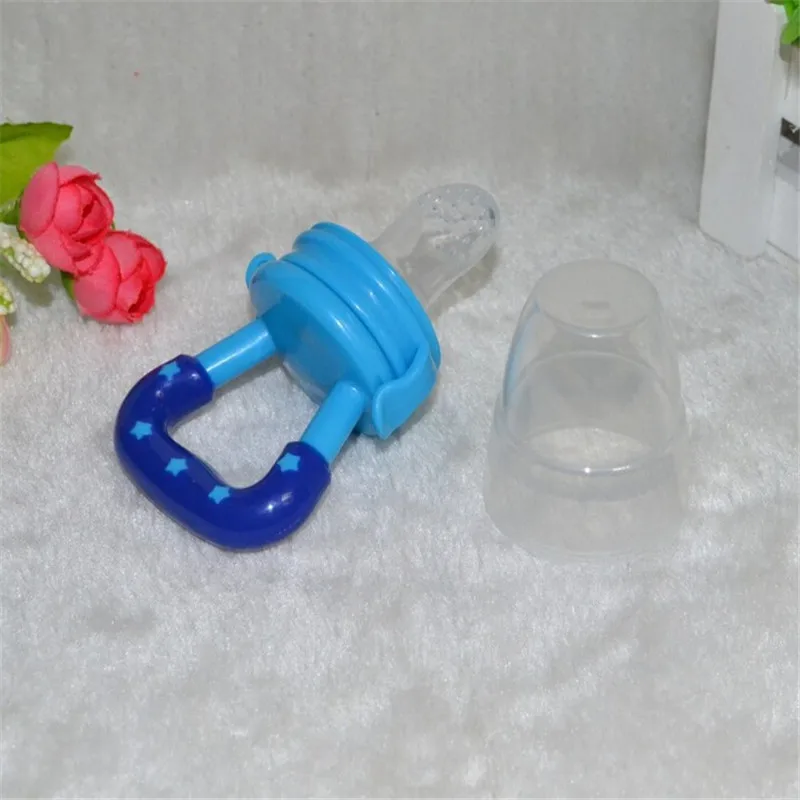 Before giving this breast, I always pinched and squeezed the nipple a little and tried to put it into the baby's mouth. It was a little difficult at first, but over time I learned.”
Before giving this breast, I always pinched and squeezed the nipple a little and tried to put it into the baby's mouth. It was a little difficult at first, but over time I learned.”
Using nursing pads
If none of the above work and your baby still has difficulty latch-on, your lactation consultant or healthcare professional may recommend that you breastfeed with a nursing pad*. They are thin and flexible nipple-shaped silicone funnels with holes at the tip through which milk will flow.
It is easier for the baby to put the feeding pad in his mouth, as it is larger and more rigid. In addition, such an overlay will reach him to the sky, causing a sucking reflex. Do not use nursing pads for a long time. If you experience pain or other problems, contact your lactation consultant or healthcare professional to check that your baby is latching on properly with a breastfeeding pad. You will also need to monitor your baby's weight gain to ensure that milk production is meeting his needs. 3
3
Over time, as your baby learns to suckle properly and your nipples get used to breastfeeding, you will be able to breastfeed without breast pads.
“My nipples are rather flat. The doctor advised me nursing pads, and I was successfully able to feed my two babies,” says Ann-Sophie, mother of two from Sweden. “My secret is to make them adhere better to the skin, I lightly wet the edges before use.”
Breastfeeding with pierced nipples
Many women with pierced nipples find it does not affect their ability to breastfeed. However, jewelry must be removed before feeding, as the child may choke on them or injure their tongue, gums or palate.
“I had a nipple piercing, but I got it off a year later when I got pregnant because my breasts were very sensitive,” says Kelly, mother of three from the UK. “I breastfed my daughter exclusively, and then her two younger brothers, and never had any problems. And the pierced nipple was my favorite!”
Some women report that milk can leak from piercings, while others believe that piercing scars reduce milk production 4 - but this has not been well researched.
“You can't predict how a piercing will affect breastfeeding until milk production begins,” Schoned explains. - If you are concerned, talk to a lactation consultant or healthcare professional. And remember that one breast may be enough for babies to get the nutrition they need if there are problems with the second. ”
What to do if you can't breastfeed with flat or inverted nipples
If you've tried all the options and still can't breastfeed, you still shouldn't deprive your baby of breastmilk.
“Mom and baby's health is the most important thing,” says Schoned. “Maybe you should switch to full pumping and feed your baby only expressed milk. You can also try the supplementary feeding system** where the baby continues to feed at the breast while receiving additional expressed milk through a tube. That is, the baby will still suck on the breast and stimulate the production of milk, which, in turn, will help you pump even more.
“I have inverted nipples. After the disastrous experience of breastfeeding my first son with my second, I decided to get my way after all,” says Babettli, mother-of-two from Italy. - On the advice of experts, I tried nipple formers and nursing pads, but everything was unsuccessful. In the end, pumping with the Medela Symphony*** Double Electronic Clinical Breast Pump proved to be the best solution for us. I fed exclusively on expressed milk for up to four months.”
After the disastrous experience of breastfeeding my first son with my second, I decided to get my way after all,” says Babettli, mother-of-two from Italy. - On the advice of experts, I tried nipple formers and nursing pads, but everything was unsuccessful. In the end, pumping with the Medela Symphony*** Double Electronic Clinical Breast Pump proved to be the best solution for us. I fed exclusively on expressed milk for up to four months.”
Care for different types of nipples
Flat or inverted nipples may require extra care as the baby may squeeze them harder and they may become inflamed at first. Tips on how to care for sore nipples can be found in Nursing Nipple Care.
If your nipples become inverted after a feed, any moisture can lead to inflammation and increase the risk of infections, including thrush. Blot your nipples dry after each feed before they have time to hide inside.
With swelling of the mammary glands, when even protruding nipples can become flat, flat or inverted nipples can be difficult.![]() Read the helpful tips in the article on breast swelling.
Read the helpful tips in the article on breast swelling.
The good news is that continuous breastfeeding or pumping can change the shape of your nipples and breastfeeding will become easier over time. With the arrival of the next child, you may not face this problem at all, as happened with Leanne, a mother of two from the UK.
“The second feeding was like a fairy tale,” she says. “After almost four months of pumping for my first son, my flat nipples were so extended that with my second son I no longer had to use breast pads - he was able to suck directly from the breast. The youngest is now nine months old and I still breastfeed him.”
Literature
1 Pluchinotta AM. The Outpatient Breast Clinic. Springer International Publishing ; 2015. - Pluchinotta A.M., "Treatment of breast diseases on an outpatient basis". Springer International Publishing. 2015.
2 Alexander JM, Campbell MJ.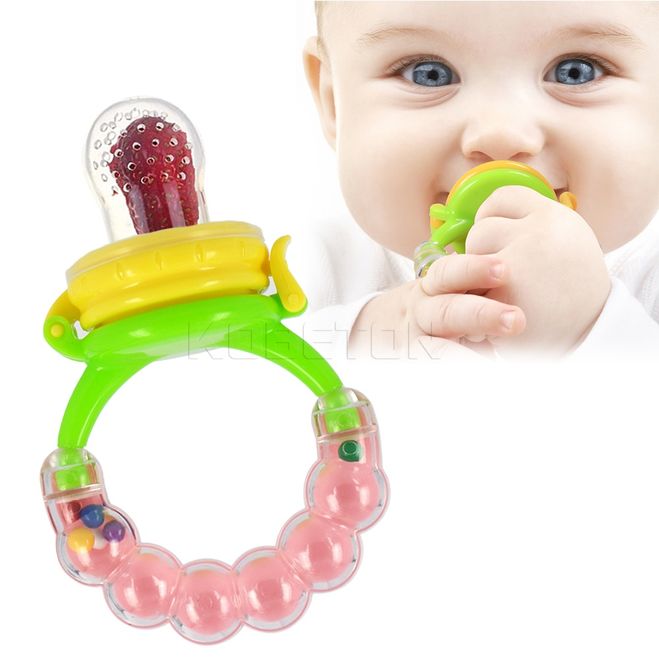 Prevalence of inverted and non-protractile nipples in antenatal women who intend to breast-feed. The Breast . 1997;6(2):72-78. — Alexander JM, Campbell MJ, "Prevalence of inverted and intractable nipples in pregnant women who intend to breastfeed." Ze Brest (Chest). 1997;6(2):72-78.
Prevalence of inverted and non-protractile nipples in antenatal women who intend to breast-feed. The Breast . 1997;6(2):72-78. — Alexander JM, Campbell MJ, "Prevalence of inverted and intractable nipples in pregnant women who intend to breastfeed." Ze Brest (Chest). 1997;6(2):72-78.
3 McKechnie AC, Eglash A. Nipple shields: a review of the literature.Breastfeeding Medicine. 2010;5(6):309-314. — McKechney A.S., Eglash A., "Nipple Covers: A Review of the Literature". Brestfeeding Medicine (Breastfeeding Medicine). 2010;5(6):309-314.
4 Garbin CP0106 , Rowan MK , Hartmann PE , Geddes DT . Association of nipple piercing with abnormal milk production and breastfeeding. JAMA, Journal of the American Medical Association. 2009;301(24):2550-2551. - Garbin S.P., Deacon J.P., Rowan M.C., Hartmann P.I., Geddes D.T., "Nipple piercing and its impact on abnormal milk production and breastfeeding", JAMA (Journal of the American medical association). 2009;301(24):2550-2551.
2009;301(24):2550-2551. - Garbin S.P., Deacon J.P., Rowan M.C., Hartmann P.I., Geddes D.T., "Nipple piercing and its impact on abnormal milk production and breastfeeding", JAMA (Journal of the American medical association). 2009;301(24):2550-2551.
Read instructions before use. Consult a specialist about possible contraindications.
* RC No. FSZ 2010/07352 dated 07/19/10
** RC No. FSZ 2010/07353 dated 07/19/10
*** RC No. FSZ 2010/06525 dated 03/17/2010 9010 top-rating 9010 according to KP, reviews, expert advice
Feeding bottle - this is the necessary thing that you need, regardless of whether the baby is breastfeeding or receiving formula. In the second case, it is clear - this is number one in your everyday life. And in the case of breastfeeding, a bottle may be needed when the mother needs to go away on business and leave expressed milk for the baby, or if there are problems with lactation and the child needs supplementary feeding.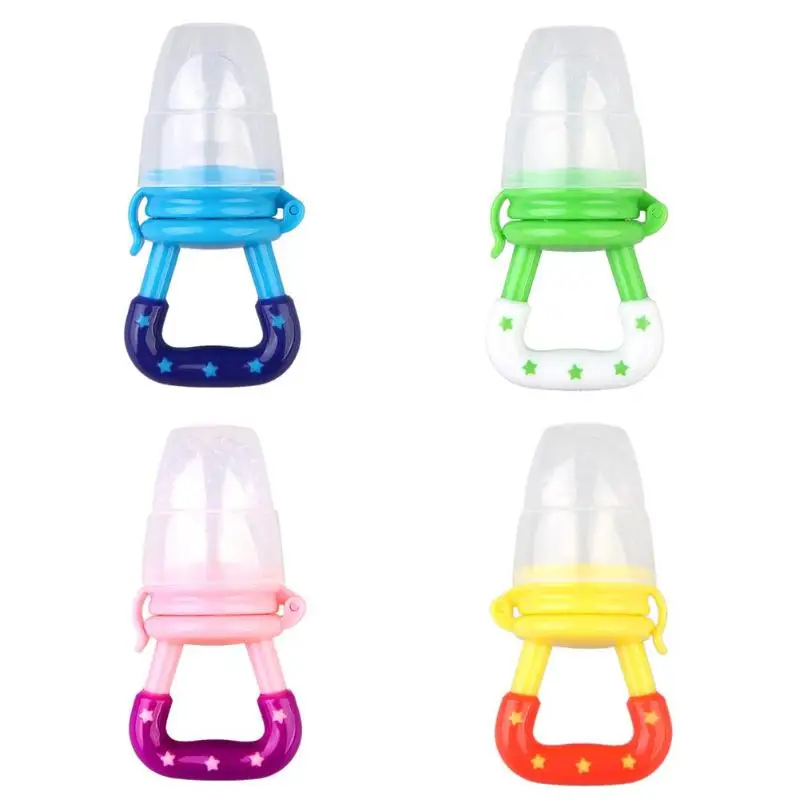
Your task is to choose a quality and safe product for your newborn. Today, a huge number of bottles for newborns and children of the first year of life are presented on the market for children's goods. There are many manufacturers, among the most famous and well-established ones are Philips Avent, Dr. Brown's, Medela, Pigeon, Сhicco, Munchkin, Nuk and some others.
There are many nuances when choosing a bottle, but one of the most important criteria to consider is the presence of a physiological nipple.
The advantages of the physiological teat
Its use is especially important when the newborn is on mixed feeding or parents sometimes resort to feeding with expressed milk. In order for the baby not to abandon his mother's breast in favor of a bottle, according to its characteristics, it should be as close as possible to imitation of breast sucking.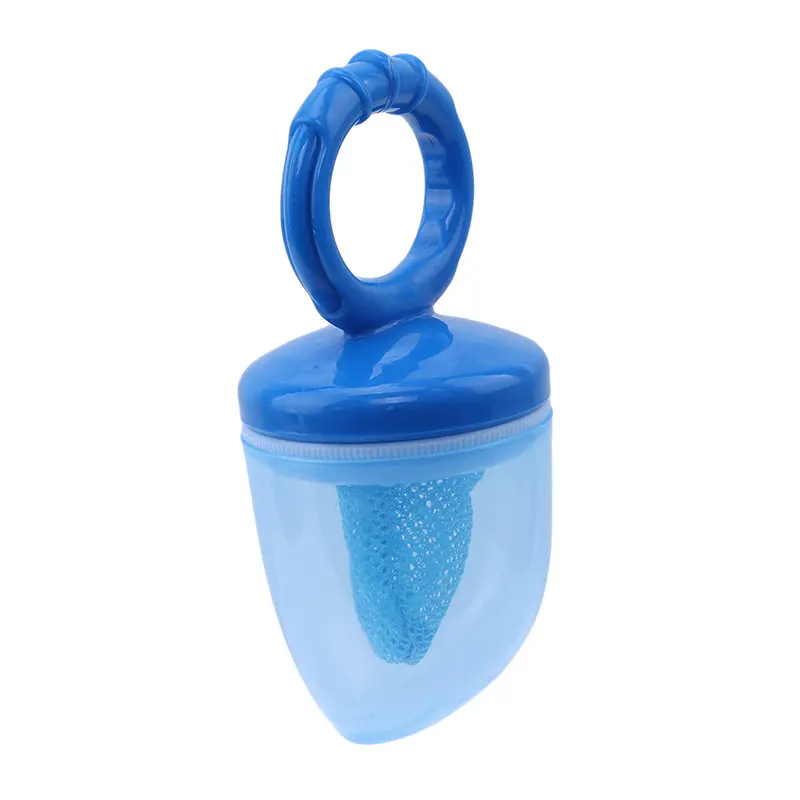
“At the initial stage, when lactation is just being established, it’s generally better to stop using a bottle and give the baby only the breast,” says lactation consultant Anastasia Kulikova . - Sucking a bottle is much easier, the newborn is still quite weak and can simply refuse his mother's breast. But if for some reason it is necessary to use a bottle, then choose options with a physiological nipple. It is most reminiscent of the shape of the nipple of the breast, in addition, please note that it should have one small hole. This means that the milk or formula from the bottle will flow slowly and the baby will have to make an effort to suckle the bottle, just like when sucking on the mother's breast. As a rule, such nipples have a fairly wide base, which contributes to the wide grip of the nipple by the baby, as well as when sucking on the mother's breast.
CP top 10 rating
1. Medela Calma bottle with smart nipple, 150 ml
Medela Calma bottle with smart nipple, 150 ml.The Swiss company has been producing products for newborns and their mothers for many years, the main feature of which is the support and preservation of breastfeeding. The Medela Calma Feeding Bottle with Smart Teat is designed specifically for mothers who want to establish and maintain breastfeeding, but for one reason or another have to use a bottle as well. The peculiarity of the bottle is in its nipple, a unique development of the company, which reproduces the vacuum sucking of the baby and prevents the swallowing of air. At the same time, the nipple has one size for the entire period of feeding, as well as in natural conditions. This version of the bottle allows the baby to retain the skills learned when sucking on the mother's breast, and easily move from breast to nipple and back when necessary. The disadvantages of this option include a rather high cost. Also, some parents note that not all babies like the specific structure of the nipple.
There is an anti-colic valve in the bottom of the bottle that prevents air bubbles from entering the mixture. Many parents also like the sleek, stylish design of the bottle. Of the shortcomings, it is worth noting the rather high cost of the product. Also in the reviews, some mothers note that sometimes the bottle can leak.
Many parents also like the sleek, stylish design of the bottle. Of the shortcomings, it is worth noting the rather high cost of the product. Also in the reviews, some mothers note that sometimes the bottle can leak.
| Manufacturer | USA |
| Bottle material | Polypropylene |
| Teat material | Silicone |
5. Twistshake bottle with container, 180 ml
Twistshake bottle with container, 180 ml. Photo: yandex.market.ru This option is more focused on children who are bottle-fed, although for a mother who is breastfeeding, but who resorts to supplementing her baby with a mixture, it will become an excellent lifesaver. The peculiarity of the bottle is that it comes with a container for storing the mixture and a shaker for whipping it. It is important that it be homogeneous, without lumps. The bottle itself is made of safe plastic, the silicone nipple has a special valve that prevents excess air from entering the baby, which means it reduces the risk of colic.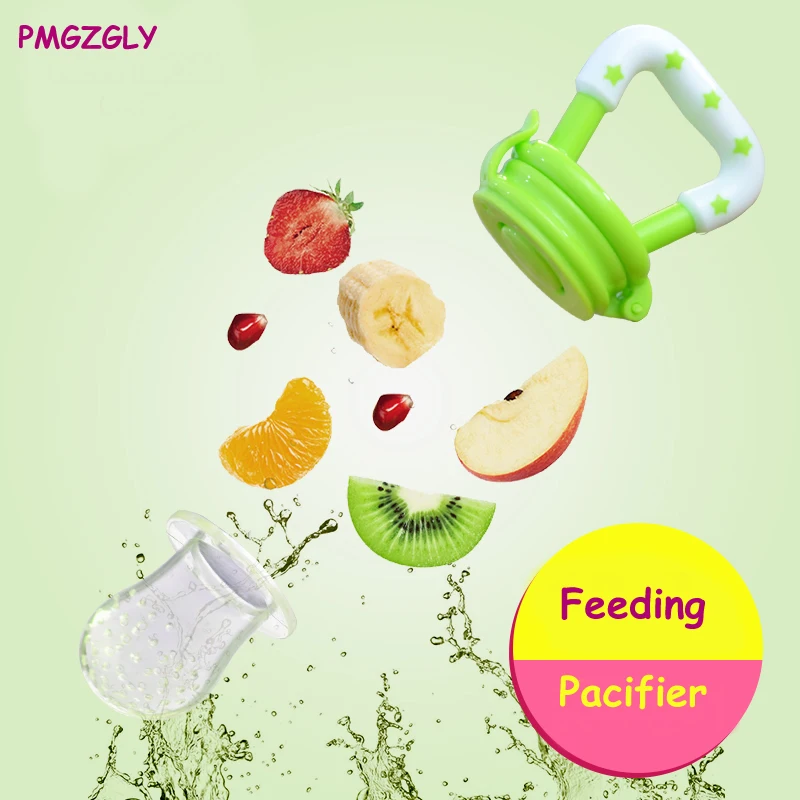
In addition, the product looks stylish, a wide range of colors is available: from neutral whites, blues and pinks to purples, bright yellows and even blacks. Of the shortcomings in the reviews, they note that the white scale is not very visible on light bottles. Also, the lid is a little tight, which can create some difficulties when opening.
| Manufacturer | Sweden |
| Bottle material | Polypropylene |
| Teat material | Silicone |
Photo: yandex.market.ru
Many parents who used a bottle of this American brand noted that the so-called anti-colic system really works. The bottle is equipped with a special ventilation system (a technology patented by the company), and when sucking, the baby does not swallow air, as happens during feeding with the help of some analogues. This means that the period of colic, which is already difficult for the baby, is not complicated. A nice bonus: the kit includes a small brush for cleaning the pacifier and ventilation system. Chicco Natural Feeling silicone bottle, with tilt and flexors, 150 ml. Photo: yandex.market.ru
A nice bonus: the kit includes a small brush for cleaning the pacifier and ventilation system. Chicco Natural Feeling silicone bottle, with tilt and flexors, 150 ml. Photo: yandex.market.ru
Italian brand, one of the oldest in the production of goods for children and their mothers. The quality of products has long been trusted by many Russian parents. Chicco's line of feeding bottles is pretty well presented, most of them have a lot of positive reviews. In our rating, let's pay attention to the bottle of Chicco Natural Feeling.
According to the manufacturer, the use of bottles in this series brings the process of feeding closer to natural. The nipple imitates mother's breasts: it has a special velvety mum effect texture, reminiscent of a woman's breasts. A special ultra-soft silicone is used for the pacifier, which means that it is more comfortable for the child, while being durable. The design allows for a proper wide grip, so the bottle should be suitable for breastfeeding. The double anti-colic valve reduces the chance of air getting in while the baby is feeding and the risk of colic. Among the shortcomings: some parents in the reviews note that the flow for the newborn may be stronger than necessary, and in this case it is better to use the bottle not from birth, but a little later. Lubby feeding bottle with milk teat Babies and Babies, 120 ml. Photo: yandex.market.ru
The double anti-colic valve reduces the chance of air getting in while the baby is feeding and the risk of colic. Among the shortcomings: some parents in the reviews note that the flow for the newborn may be stronger than necessary, and in this case it is better to use the bottle not from birth, but a little later. Lubby feeding bottle with milk teat Babies and Babies, 120 ml. Photo: yandex.market.ru
Another glass and at the same time budget bottle in our rating. It has a small volume, it is convenient to use in the first months of a baby's life. The milk nipple that comes with the bottle has a slow flow and an anatomically correct shape. There is a valve that traps air. The bottle closes with a special rather large cap, which can also be used as a glass.
Bottle material
Most parents today prefer plastic bottles. Their advantages are that they are light, do not break, many are shaped with recesses to make it more comfortable to hold in your hand. The main thing here is the quality of the plastic from which the bottle is made.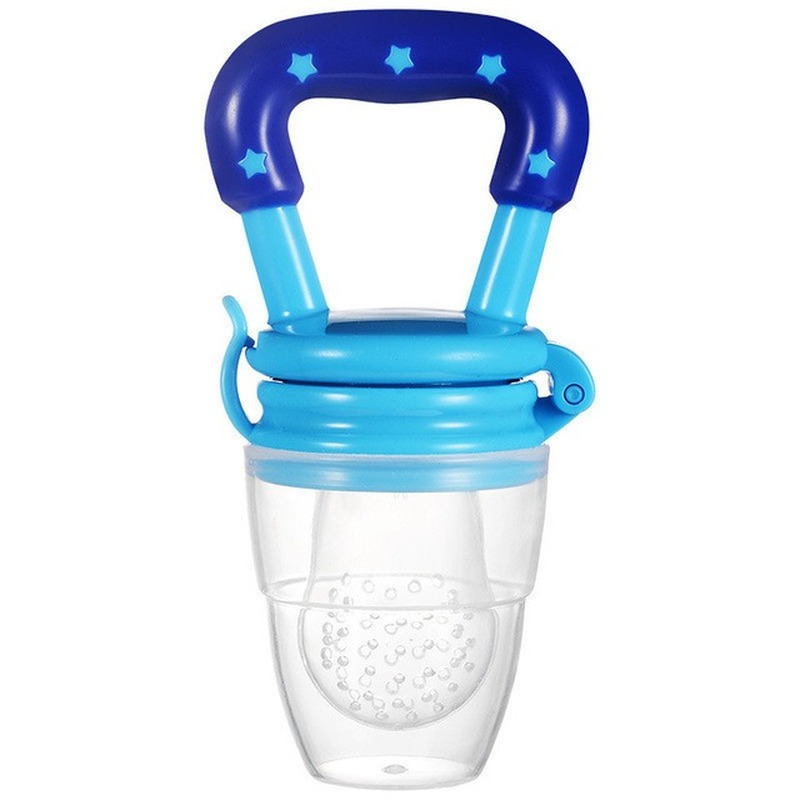 It should be polypropylene, which does not contain Bisphenol A, does not emit harmful substances during sterilization and is safe for the newborn. Pay attention to the corresponding markings on the label.
It should be polypropylene, which does not contain Bisphenol A, does not emit harmful substances during sterilization and is safe for the newborn. Pay attention to the corresponding markings on the label.
As for bottles made of glass, this is a more environmentally friendly material, glass does not react during sterilization, does not absorb odors, which can be seen in some plastic bottles. But they are heavier than plastic ones, they break easily. Although there are a lot of adherents of glass bottles among parents, and most manufacturers necessarily have such options in their lines.
Size and shape of the bottle
A newborn eats small amounts of food, so at the first stage it is advisable to purchase small bottles - up to 140 ml. They are more compact and easy to use. A bottle with a larger volume will be less convenient, but it will last longer. A wide bottle is usually more comfortable to hold in your hand. A plus will be a wide neck - it is convenient to pour the mixture into this and wash it.
Teat material
There are two options here: silicone or latex. Latex nipples are brown in color, softer and often more appealing to babies. But they are short-lived and often require replacement. The silicone nipple is harder, which can make it difficult for weak premature babies to feed. But it keeps its shape better and lasts longer. Focus on the tasks that you set for yourself when using the bottle. If you want to maintain lactation and use an exclusively physiological nipple, it is better to choose silicone. For premature babies, latex may be better suited. In addition, the baby himself can declare his preferences and refuse one option in favor of another.
Pacifier shape
The best option would be a physiological nipple, as close as possible to the mother's nipple, with a wide latch, which promotes the development of the same skills in the baby as when breastfeeding. There are also orthodontic nipples with beveled nipples, it is believed that they favorably affect the proper development of the jaw system.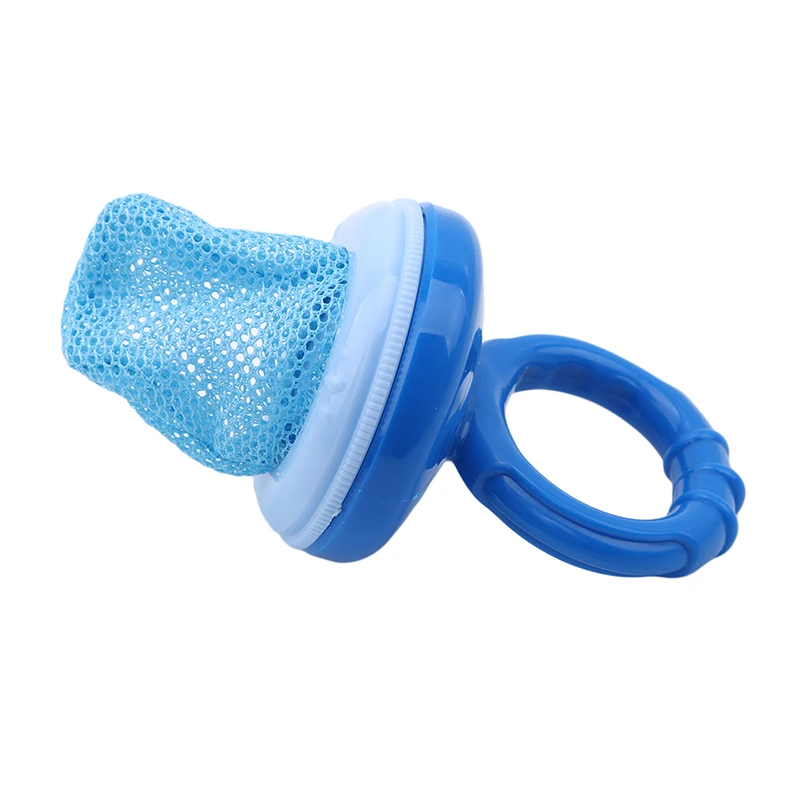
Flow rate and teat size
Depending on the age of the baby, teats differ in the size and flow rate of the liquid coming from the bottle. For a newborn, a size 1 or 0 nipple is suitable (may vary depending on the manufacturer). It is also important to use a slow-flow nipple for the first month so that the milk or formula does not flow quickly, and the baby makes an effort to suckle the bottle, as well as suckling at the breast. The slowest flow is one small hole in the nipple. The more holes, the faster the liquid will flow to the baby. For example, a pacifier with two holes is best used after a month. All these characteristics are indicated on the instructions for the product, pay attention to this when choosing.
Anti-colic system available
Today more and more manufacturers offer so-called anti-colic bottles. They suggest the presence of a nipple with a special valve that does not allow air to enter the baby when feeding. There are also options when the "anti-colic" mechanism is placed in the bottle itself.